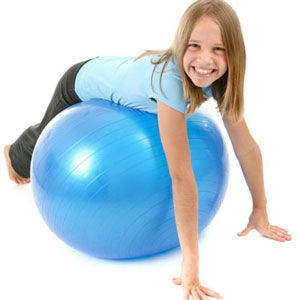
These were a few of the research findings:
Middle school kids who exercised vigorously for at least 20 minutes, three days a week, achieved higher grades over two semesters than students who did not intensely exercise.
Elementary school children with good aerobic fitness were more likely to excel in reading and math.
Overweight children who exercised 40 minutes every day for 15 weeks scored better in tests of executive function – the “conductor” of cognitive skills – than overweight kids who only exercised 20 minutes.1
More research may be needed to reinforce results like these. But researchers point to several possible reasons for these promising findings. For one, physical activity increases the flow of blood and oxygen to your brain. And, as you may already know, exercise boosts endorphins. These are hormones in the brain that improve mood. They may give kids an extra lift for tackling academic challenges. Exercise also promotes development of a protein that acts a little like Miracle-Gro for your brain. Brain-derived neurotrophic factor (BDNF) is found in areas of the brain that are critical for learning, memory, and higher thinking.2
Unfortunately, many children today aren’t getting the physical activity their bodies and brains so desperately need. The Centers for Disease Control and Prevention (CDC) says that children and teens need a minimum of 60 minutes of mostly aerobic, physical activity each day. Aerobic activities are the ones that get your heart beating faster, such as fast walking or running.3
What if your child isn’t into sports or shuns the idea of physical exercise altogether? Then, it’s up to you as a parent to help make exercise become a habit. Here are some ideas:
Do what you can to set a positive example.
+ Find fun activities you can enjoy together as a family. Hike, jump on a trampoline, or play hide-and-go seek.
+ Give gifts that promote physical activity, not just sedentary ones.
+ Help your child find physical activities he or she enjoys. Remember: it’s not the same for everyone. Some like team sports. Others enjoy individual activities such as swimming or skating.
+ Set up an electronics-free time each week.4
With teens, exercise may be an even tougher sell, but remember that exercise doesn’t have to be just for jocks. There are countless ways to hook a kid into being more active. Think of potentially more popular activities like the video game, DanceDance Revolution. Or maybe hip-hop, martial arts, or mountain biking is the way to go. I hope this article helps to get your children active!
Nothing herein constitutes medical advice, diagnosis or treatment, or is a substitute for professional advice. You should always seek the advice of your physician or other medical professional if you have questions or concerns about a medical condition.
Sources
Singh, A. et al. “Physical Activity and Performance at School: A Systematic Review of the Literature Including a Methodological Quality Assessment.” Arch Pediatr Adolesc Med. 2012;166(1):49–55. Available at: http://www.ncbi.nlm.nih.gov/pubmed?term=Physical%20Activity%20and%20Performance%20at%20School%3A%20A%20Systematic%20Review%20of%20the%20Literature%20Including%20a%20Methodological%20Quality%20Assessment. Accessed March 21, 2012.
Edutopia: “A Fit Body Means a Fit Mind.” Available at: http://www.edutopia.org/exercise-fitness-brain-benefits-learning. Accessed March 21, 2012.
CDC: “How Much Physical Activity Do Children Need?” Available at: http://www.cdc.gov/physicalactivity/everyone/guidelines/children.html. Accessed March 21, 2012.
CDC: Available at: “Making Physical Activity a Part of a Child’s Life.” http://www.cdc.gov/physicalactivity/everyone/getactive/children.html. Accessed March 21, 2012.
(End of Article)
